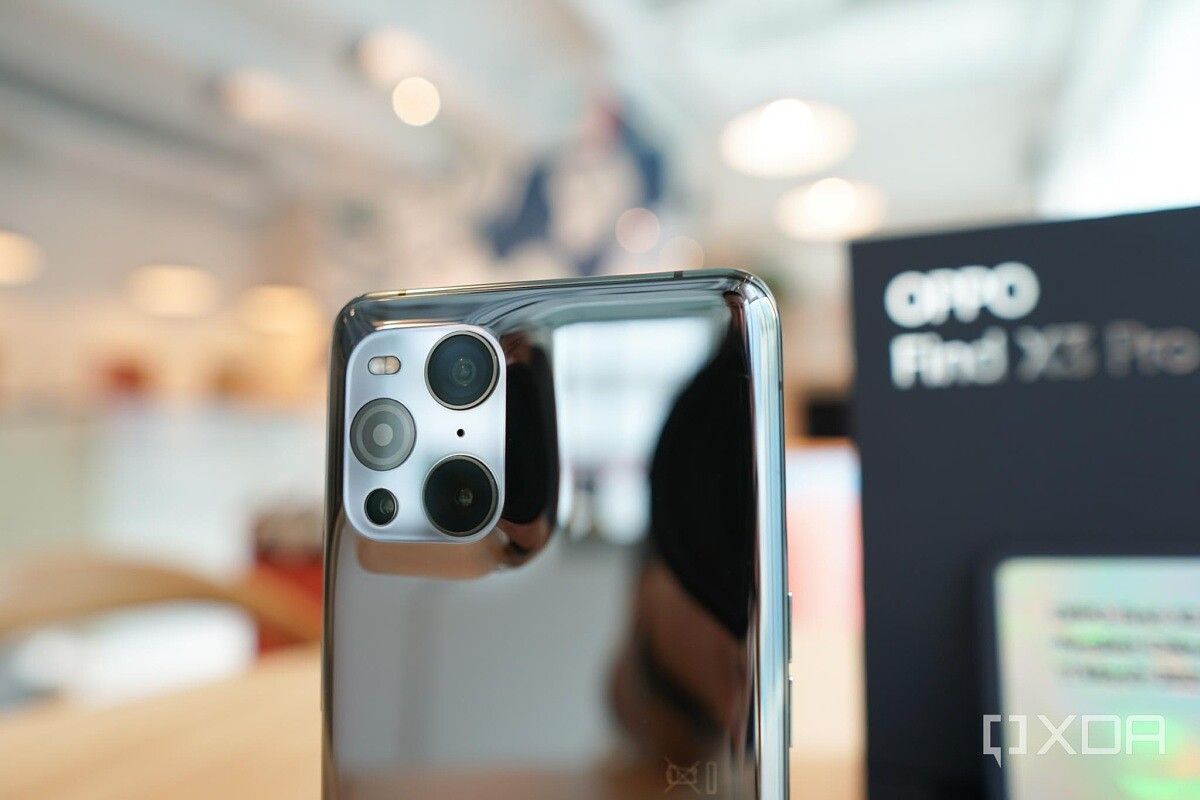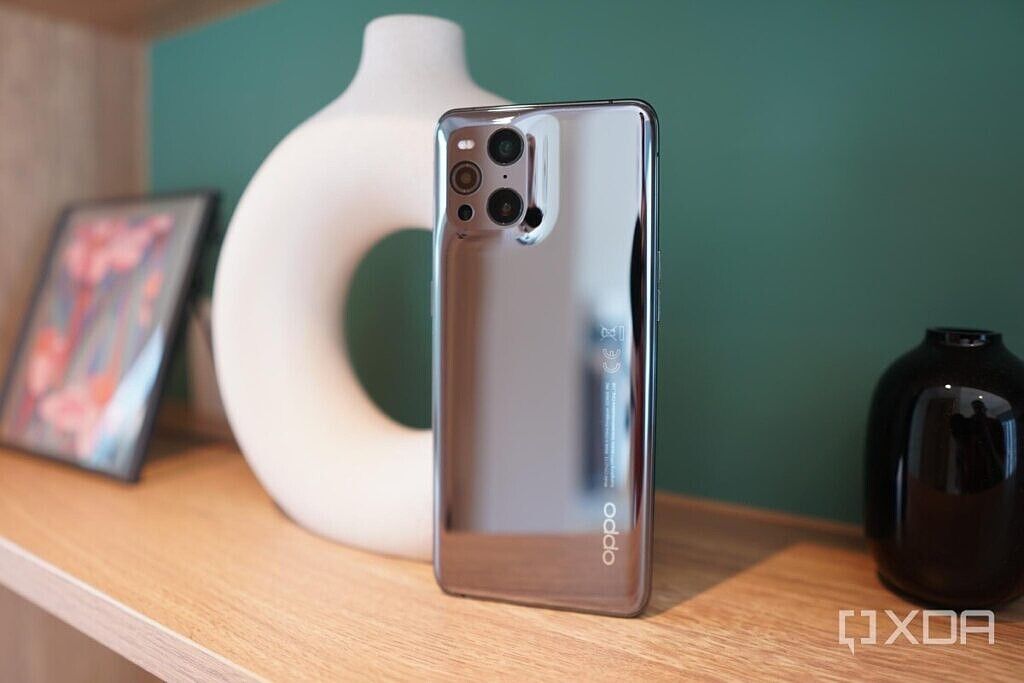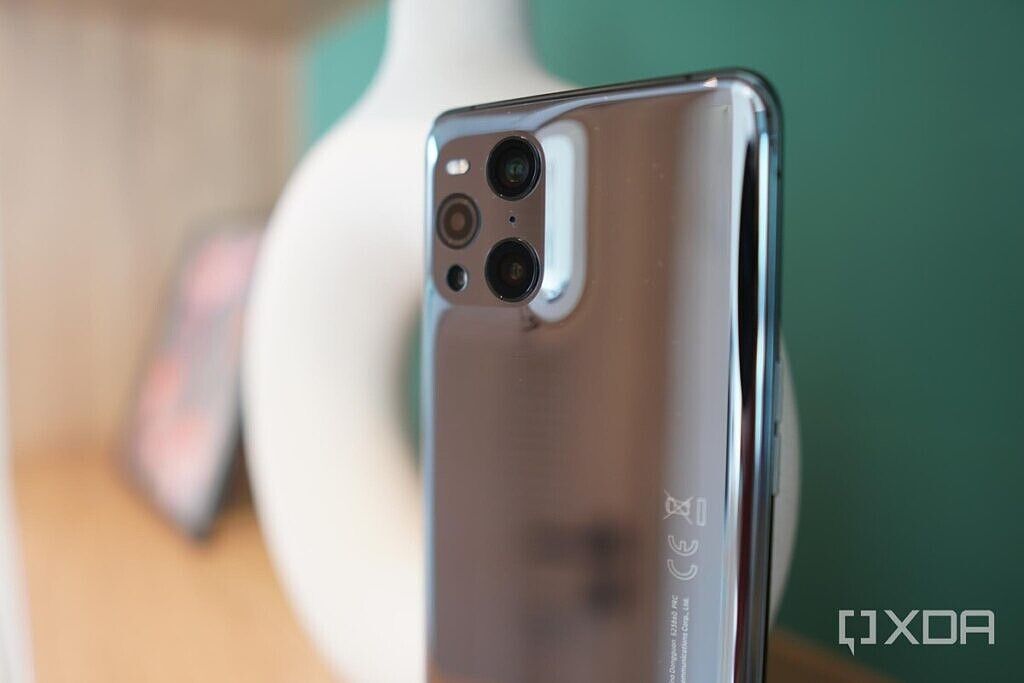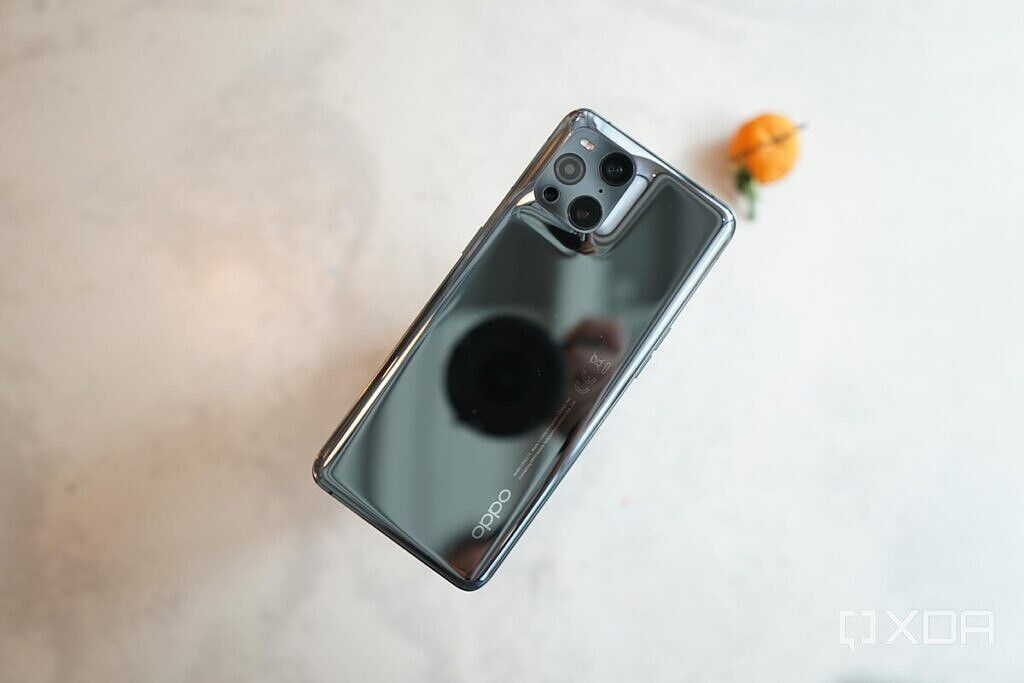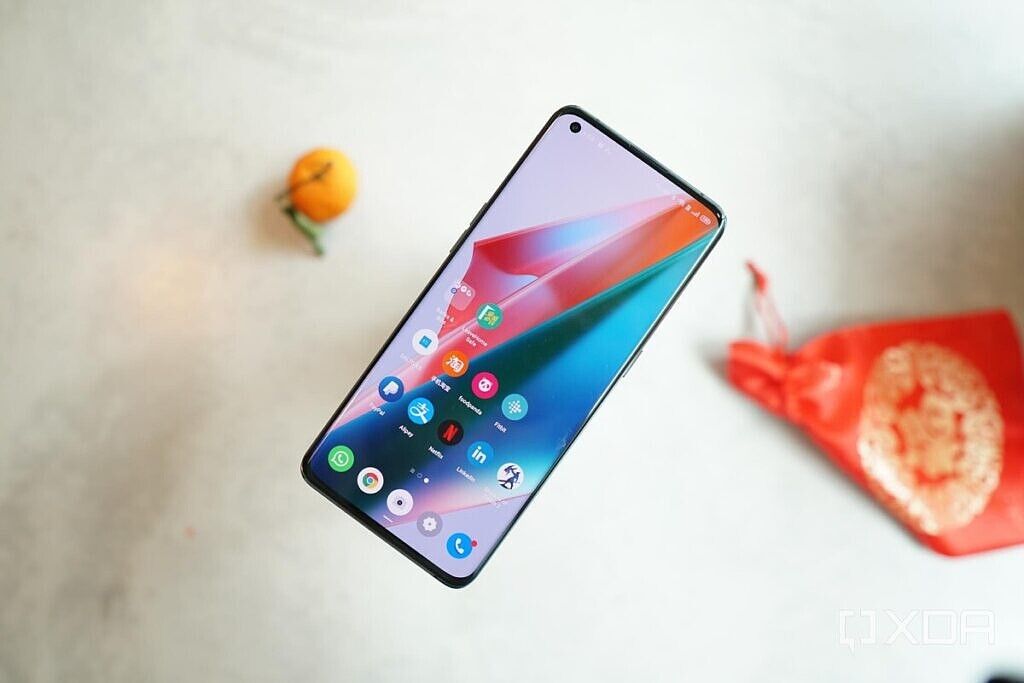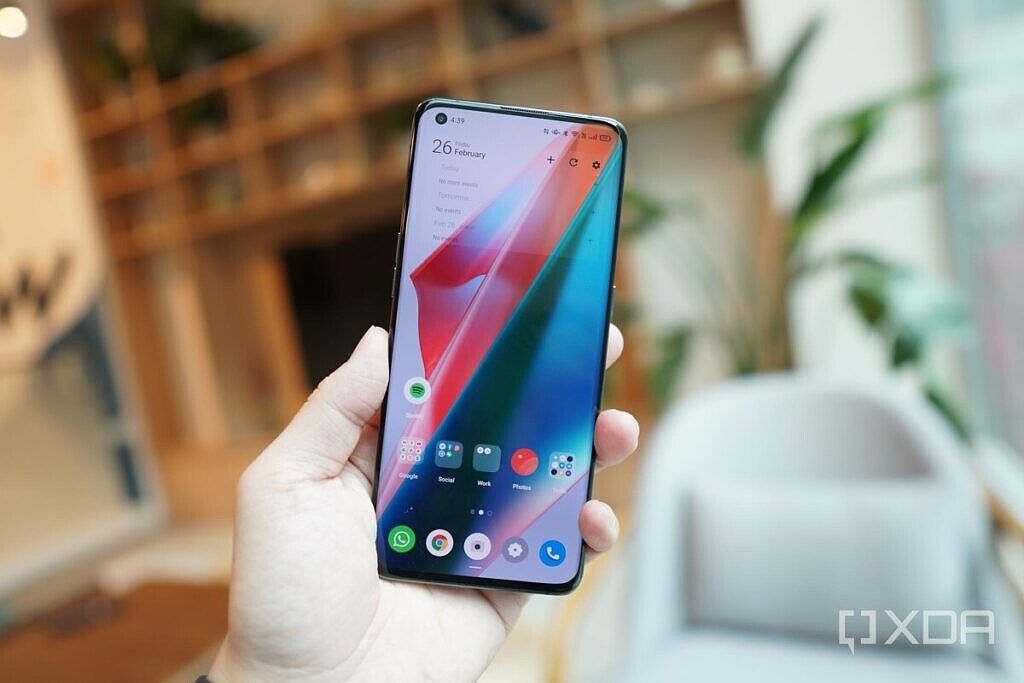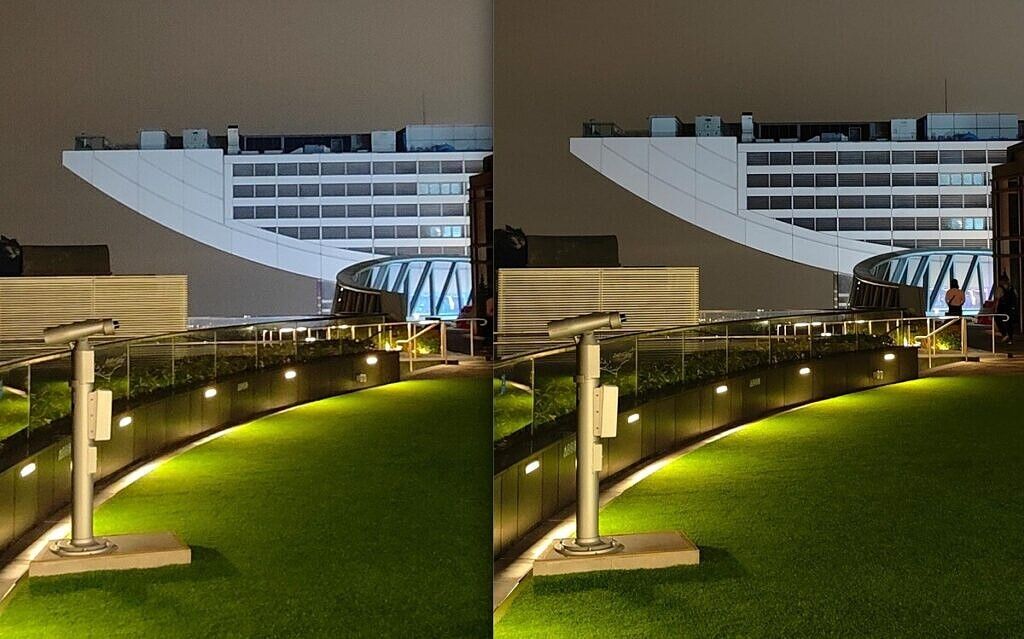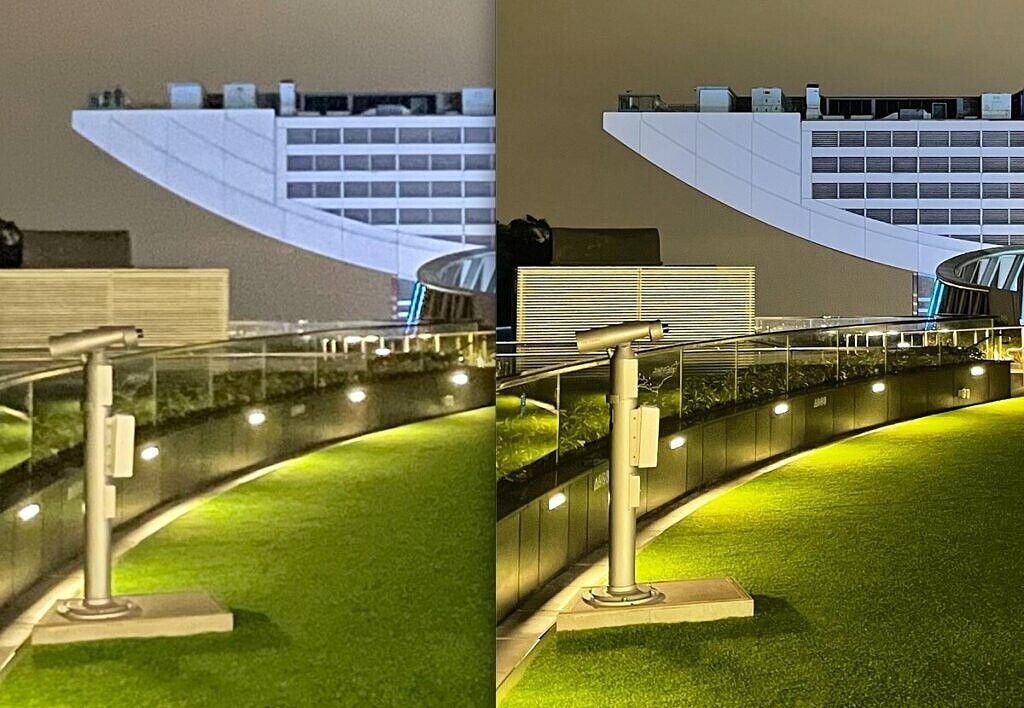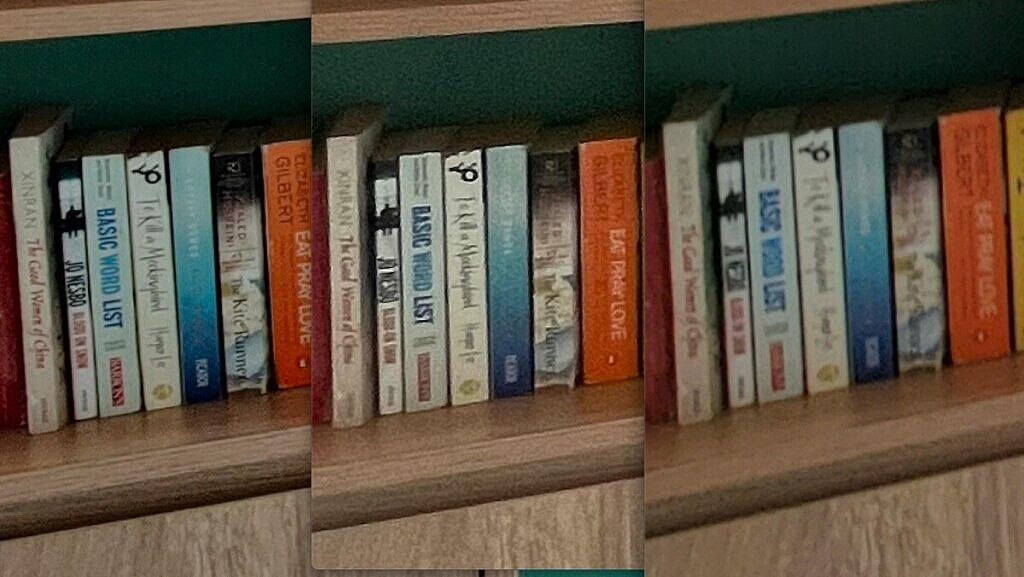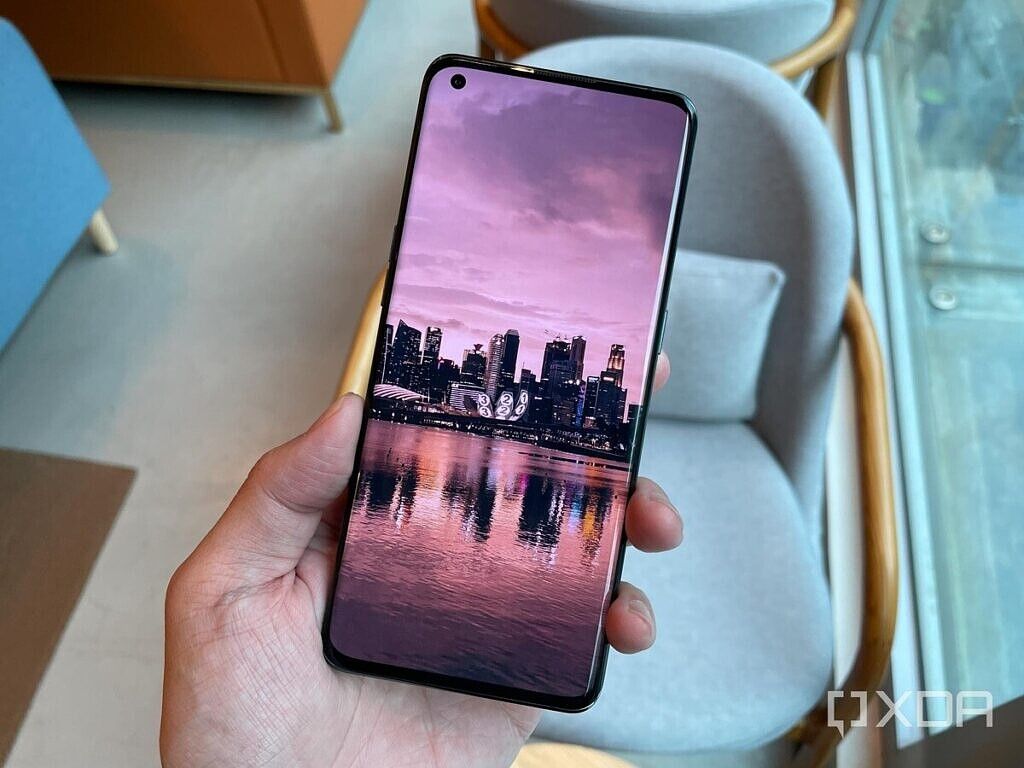As recently as a couple of years ago, you could spot the difference in a new flagship phone at first glance. The screen bezels may have shrunken drastically. Or maybe the number of cameras doubled from last year's phone. That's not the case anymore over the past couple of years, as smartphone brands have become so great at making great smartphones that, at least for the slab form factor, there isn't much more room to improve. After all, how much more fluid can animations get beyond 120Hz? Bezels can't possibly go any slimmer. All the basic apps we need run fine on a Snapdragon 855, let alone the Snapdragon 888.
In the past, anyone could grab a Galaxy S10/Huawei P20 Pro/OnePlus 7 Pro and immediately see where they have improved over the Galaxy S9/Huawei P10/OnePlus 6, but you can't quite do that with 2021 slab phones. The improvements are more subtle, and arguably more niche -- like, say, improving dynamic range in the ultra-wide lens, or add faster wireless charging and adaptive refresh rate.
This is the case with the OPPO Find X3 Pro that just launched. Casual smartphone users would have a hard time finding improvements over last year's Find X2 Pro -- in fact, there is one area in which the Find X3 Pro takes a clear step back -- but for those who care about every aspect of a smartphone, those who want a refined product, the Find X3 Pro is one of the most balanced and polished and well-rounded slab smartphone yet.
OPPO Find X3 Pro: Specifications
OPPO Find X3 Pro: Design and Internals
The OPPO Find X3 Pro is yet another Android slab flagship, so most readers should know what to expect: the latest Qualcomm Snapdragon SoC; sleek, curvy glass-and-aluminum sandwich design; almost non-existent bezels around the curved OLED screen; multi-camera system around the back and a selfie camera nestled inside a hole-punch cut-out on the screen.
Here's where the Find X3 Pro deviates: the glass back panel is one single sheet of glass that covers the camera module too. The camera bump, instead of protruding abruptly like on many phones, is eased into the back the phone with curves.
I must admit, when renders of the Find X3 Pro first leaked, I thought this camera bump design looked ugly. But in person, it looks much more elegant and fluid. The camera module's curves reflects light in various directions and shades, resembling the look of the liquid metal T-1000 in the film Terminator 2: Judgement Day.
OPPO claims it takes over 40 hours to produce this sheet of glass, which requires over 100 steps to create the curvature from over 2,000 points. I've been a journalist long enough to know marketing claims should be taken with a grain of salt, but I can confirm the phone is very comfortable to hold. Its 193g weight and 8.26mm thickness make it a more comfortable device to hold than the heavier, bulkier Galaxy S21 Ultra.
Last year's Find X2 Pro faced some flack for not including wireless charging. The Find X3 Pro corrects this. The phone's 4,500 mAh battery can be topped up wirelessly, at up to 30W speeds if using OPPO's own wireless charger. It can also top up super fast via OPPO's 65W charging brick, which is included in the box. The Find X3 Pro is also rated IP68 water and dust resistance too.
OPPO Find X3 Pro: 10-bit color, 120Hz display
The Find X3 Pro is the first device to make use of OPPO's "Full-path Color Management System," which supports an end-to-end 10-bit color solution. This means the Find X3 Pro can shoot, store, and display photos in 10-bit colors, which offers up to a billion possible colors compared to 8-bit photos' 16.7 million possible colors.
Enthusiasts who care about color accuracy should find plenty to like, and XDA's own display expert Dylan Raga has an in-depth analysis of the phone's display coming soon. But for me, I'm not sure I can see a big difference between a 10-bit photo and an 8-bit one. But Dylan is much more qualified at analyzing display panels than I am, so be sure to read his review.
In person, the Find X3 Pro looks much more elegant and fluid
This isn't to say the display doesn't impress me, however. The Find X3 Pro's screen is still a 6.7-inch, 120Hz OLED with QHD+ (3,216 x 1,440) resolution. To my eyes, this screen is nearly flawless, and as immersive and brilliant as the panels seen in the S21 Ultra or Xiaomi Mi 11. Like those other two screens, the Find X3 Pro's panel is also LTPO and refreshes at variable rates. Its maximum 1,300 nits of brightness doesn't get as high as the Galaxy S21 Ultra's 1,500 nits, however.
OPPO Find X3 Pro: Ultra-wide angle camera
The Find X3 Pro's main camera is very good, but so are the main cameras of every top flagship I've tested in the past year. Instead, it's the other peripheral cameras that stand out from the pack, so let's talk about these cameras first.
Let's start with the ultra-wide camera. It's a 50MP Sony IMX 766 sensor -- the exact same as the main camera, in fact. It's the most pixel-dense ultra-wide-angle camera on a smartphone yet, and it can shoot in 10-bit.
As someone who enjoys casual landscape and city photography, I love that the Find X3 Pro's ultra-wide shooter uses the same sensor as the main camera, because this means ultra-wide-angle photos look closer to images captured by the main camera. There's consistency in color science, image sharpness, and dynamic range between shots with the main or ultra-wide cameras. And because the sensor has so many pixels, the resulting shots are more detailed and sharper than typical ultra-wide cameras of other phones.
In fact, if I zoom into an ultra-wide shot, it looks close enough to the same shot captured by the main camera.
Even in darker scenes, where the ultra-wide lens tends to suffer, the Find X3 Pro's ultra-wide holds up reasonably well.
Zooming in again.
In the above set, once I zoom into the ultra-wide shot I can see a drop in image quality compared to the main camera: the texture of the grass is not as noticeable, there's more noise, the image is softer all around. But this drop-off is small compared to the other phones' ultra-wide cameras. Check out the exact same side-by-side collage, but with the iPhone 12 Pro's main and ultra-wide cameras. The drop-off in image quality is quite significant.
If I pit the Find X3 Pro's ultra-wide-angle camera against the Galaxy S21 Ultra and iPhone 12 Pro, the Find X3 Pro's ultra-wide shot is sharper in every scenario. In the below set, you can still read the titles of the book on the shelf clearly in the Find X3 Pro's shot. The other two, not so much.
The ultra-wide camera also captures clean and stable videos even in a low-light environment. Of course, quality isn't as high as videos from the main camera, but this video is very impressive for an ultra-wide.
Here are more ultra-wide photo samples. I have tested enough phones to say confidently this is the best ultra-wide angle camera on the market right now.
OPPO Find X3 Pro: Micro-lens camera
The second camera that stands out: the micro-lens. This is essentially a macro lens, on steroids. You can bring the camera up really close to an object and see an extreme level of detail that the human eye can't see. Here are a series of regular shots of an object, followed by an up-close shot by the micro-lens.
OPPO even built a ring light around the 3MP micro-lens to help with lighting, because when you're pressing a phone directly against a surface to shoot, it blocks out much of the outside light source.
OPPO Find X3 Pro: Main camera, Zoom lens, Video performance, Selfies
As mentioned earlier, the Find X3 Pro's main camera is very good -- it captures sharp, vibrant photos with excellent dynamic range -- but it doesn't blow away the competition the way the ultra-wide and micro-lens do. This is more a testament to how far smartphone cameras have come: every flagship phone has a good camera. Even the computational photography lead Google once had with the Pixel series has all but evaporated.
The 1/1.56" image sensor is smaller than the sensors used by Samsung and Huawei for their flagship phones, so the Find X3 Pro isn't able to pull in quite as much light in extremely dark scenarios like the Galaxy S21 Ultra or Mate 40 Pro, but turning on night mode fixes the problem.
Portraits/bokeh shots have aesthetically-pleasing creamy bokeh and accurate edge detection.
At the beginning of this piece I mentioned, there's one area in which the Find X3 Pro is a clear step back from the Find X2 Pro and its zoom camera. The Find X3 Pro only has a 13MP conventional telephoto zoom lens which can produce 5x hybrid zoom and maxes out at 20x digital zoom. This feels pedestrian compared to just about every other high-end flagship on the market. This is particularly surprising considering OPPO was one of the pioneers (along with Huawei) of the Periscope zoom lens technology that has proven to be the superior solution to producing sharper zoom images. Last year's Find X2 Pro used a 5x optical Periscope zoom camera, so the Find X3 Pro's zoom shots are a step back.
I inquired with an OPPO engineer on the decision to leave behind the Periscope camera, and they said their research showed most consumers rarely needed to zoom past 3x or 5x, so a long zoom camera is not a necessity. That statement does have some truth to it, but if I'm comparing this phone against other big dogs in the Android space, it loses in zoom shots.
In a vacuum, the Find X3 Pro's 5x and 10x zoom shots are still decent, but once they're compared against a shot by a Periscope camera, then its flaws become apparent.
Here's the Find X3 Pro's 10x zoom shot compared to a 10x shot captured by the Huawei Mate X2's Periscope zoom lens.
The Find X3 Pro's main camera can "only" shoot video up to 4k/60 instead of the 8k/30 seen in Samsung and Xiaomi's recent flagships, but it doesn't bother me much. I find little to no use with 8k video recording right now. I find the 4k/30 to be the best setting for the Find X3 Pro -- videos appear stable, balanced, and full of punchy colors.
There's also a Pro video shooting mode that offers granular controls, including the ability to switch between lenses and adjust focus, shutter speed, and white balance manually, even in the middle of recording a video. It's a feature that LG phones have offered for a few years, but the Find X3 Pro's camera hardware is significantly superior to any LG camera hardware over the past few years.
The Find X3 Pro's selfie camera is a bit hit and miss. For the most part, shots appear well-detailed and natural (without overly skin smoothening), but if I'm shooting against heavy backlight, selfies can turn out very inconsistent (see the first two selfies in the set below -- they were taken back to back). In general, I think Samsung, Google, or Apple's phones are smarter at finding balance no matter the lighting condition.
Despite the relatively weak zoom camera and inconsistent selfie camera, I'm still very impressed with the Find X3 Pro's camera system overall. I love that the ultra-wide camera can capture photos and videos that are very close in sharpness and details compared to the main camera. And the micro-lens is something I haven't seen from any other phone before.
I love that the ultra-wide camera can capture photos and videos that are very close in sharpness and details compared to the main camera
OPPO Find X3 Pro Performance: Real-world use, Benchmarks, Battery life
With a Snapdragon 888 and 12GB of RAM, the OPPO Find X3 Pro doesn't disappoint in performance. I'm not much of a benchmark guy, but the Find X3 Pro's results in Geekbench, 3D Mark, PC Mark all returned top scores.
In real-life usage, I pushed the phone quite heavily. I run the phone at its maximum settings too, at 120Hz refresh rate and WQHD+ resolution, and I'd have Slack open in a floating window at all times, while I jump between Twitter, Instagram, Camera, and Gmail, all while streaming Spotify, and the phone never missed a beat. Animations look great at 120Hz too, but I'll get to that in the next section.
Battery life, as expected, is not amazing. Since I run the phone at maximum settings and I'm a heavy user, I get just about 4.5 hours of screen-on time on average, and about 12 hours of real-world use with the phone before I completely drain the battery.
The good news is charging via the included 65W brick is crazy fast. Earlier today I plugged in a Find X3 Pro at 13% battery, went to take a quick eight-minute shower, and by the time I got out the battery was at 44%.
OPPO Find X3 Pro: Software
For years, I declared OnePlus' OxygenOS as my favorite version of Android, even more than Google's official version that runs on the Pixel phones. I like OxygenOS so much because it has a clean and minimum appearance like stock Android, but it's also full of small customizations like shortcut gestures to launch apps quicker. OPPO's ColorOS has been catching up to OxygenOS in the last couple of years, and now with ColorOS version 11.2 in the Find X3 Pro, I'm ready to rank it ahead of OxygenOS as my favorite Android skin of them all.
A big reason for this is because OPPO has basically adapted all of OxygenOS's awesome shortcuts and customization, like the ability to draw a shape on an off-screen to turn on the camera or flashlight, long-press a fingerprint scanner to directly jump into an app as soon as the phone unlocks, or swipe down with three fingers to grab screenshots.
In fact, ColorOS has one-upped OxygenOS because it offers a one-hand mode, and the ability to open apps in a floating window.
And with 10-bit color being the main selling point of this year's phone, OPPO has even built a color perception test into the software, which requires the user to select a series of colors based on what they see. Once the results are in, OPPO will adapt colors to that user's color perception.
Conclusion: Other than the Zoom shots, I have no real complaints
There's a saying in western culture: "when you do things right, people won't notice you've done anything at all." I feel like this applies to the state of slab smartphones. We, consumers and reviewers, have become so spoiled by slab smartphones checking every box and nailing all the basics that we sometimes dismiss slab phones as boring.
I am guilty of this. The original Find X, with that quirky design, was a jaw-dropper of a device that was unlike other phones on the market. I remember being so excited for it, I was refreshing my shipping tracking every hour for two days anticipating its delivery. I didn't feel this way with the Find X3 Pro, because on paper it looked like the six other smartphones I already own.
But you know what? The original Find X was not a practical device to use. That same design that blew everyone away eventually became a hassle, because the phone didn't have a fingerprint scanner and relied on a pop-up camera to unlock via face scan.
The Find X3 Pro, by comparison, is a far more practical device. It has a great display, processor and software; a really strong main camera, arguably the best ultra-wide camera, and unique micro-lens that can do things no other phone can do. It's got fast charging, wireless charging, stereo speakers, great haptics, IP water resistance rating, and feels comfortable in the hand. Other than the lack of a powerful zoom lens, I have no complaints about this phone.
At is usually the case with OPPO phones, pricing varies wildly all over the market. In the UK it's priced at £1,099 ($1,500), while the price in Ireland is a more reasonable €1149 ($1,375). I'm certain the price will be lower in Asia. In my opinion, $1,500 for the Find X3 Pro is a tough sell, since the Galaxy S21 Ultra costs less. If you can find the Find X3 Pro for $1,375 or lower, then it is a reasonable price for a very polished flagship. However, the Xiaomi Mi 11 is almost objectively a better value.

